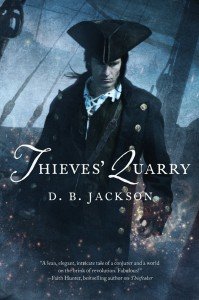By daily practice I don’t mean I think you should or must write every day. If you want to and if it benefits your writing and your psyche, do write daily. If you can’t (and there are myriad reasons why people can’t or don’t want to), then write as you can on the schedule that works for you.
Just don’t beat yourself up about what is unavoidable.
If there is one takeaway I would hope readers would get, it is that line:
Don’t beat yourself up about what is unavoidable.
If you don’t get all the writing done that you were hoping to, especially under circumstances where you may simply have no choice, it’s okay. It happens.
This discussion came up often between my friend Michelle Sagara and me because we are both parents, and especially when our children were quite young there were days and emergencies and plain boring irritating interruptions that we could not control. I used to tell my children: “Don’t interrupt me unless there is fire or blood.” So it isn’t as if I gave them the message I was available to them at all times with no boundaries about my own needs and work. But some days work became impossible, and one of the lessons both Michelle and I (and others) had to learn was when to let go of what couldn’t be helped.
It’s important to be able to accept and move forward when you-as-writer (or creator) realize that this is one of those days or weeks where you miss your target. Letting go is better than holding on to the sense of failure. Let the short-term daily target be seen within the perspective of the medium- and long-term. If you set a goal of writing 1000 words a day, on 5 days a week, for 4 weeks, and you end up with 16,500 words instead of 20,000 words, you still have 16,500 words more than you did when you started.
I use the term “daily practice” in this context to refer to the general routine through which a person writes on a reasonably regular basis.
As a writer writing under contract, with deadlines, I personally find I must treat writing as work. That doesn’t mean it isn’t also inspiration, creativity, joy, and all the other lovely categories that speak to the intrinsic beauty and challenge of creative work. But I am also doing this to make a living. I personally can’t wait around for “the muse.”
That means my daily practice centers on moving forward at a steady rate toward a set goal.
I’ve learned a few things.
1) Set a rate that is generally do-able.
How much that is will change depending on your circumstances, how much time you have, how well you know the story you’re writing, your physical and emotional health (both big factors in your capacity to write well), and simply your skill level at producing words. Again, you won’t necessarily always meet the daily target but you’re aiming for a strategic goal.
1A) As a working writer I can’t just measure word count. I have to factor in time for 1. development, 2. revisions 3. edits, proofs, and other elements of the production process.
2) There isn’t one true way to proceed. Process is mutable and circumstantial.
Sometimes I have to feel my way forward. For me “feeling my way forward” is a slow process that creates an immense amount of what I will call slag: stuff I write that isn’t use-able later. In cases where I can block out a next scene decisively, knowing exactly what has to happen, why, and what people’s reactions will be and how the narrative arc of the scene goes, I find I can write far more quickly and efficiently than if I’m exploring and groping. But both ways — and others besides — are valid. A discussion of process is one for another post.
3) Build in time off.
No, really. Burnout is a real thing that happens. Some of the most productive writers I know build in time off into their writing schedules and still produce at extremely productive rates. I would suggest that the time off, the breaks and vacations, the periods in which you “refill the well,” all enhance productivity.
4) Always, always, be kind to yourself.
I mean this in the deepest sense. Struggling with internal negative voices is hard enough; I do it all the time. In my experience as a human being the negative self talk is about as beneficial and fruitful as turning that same talk onto a child or another person. I don’t know about you, but I know that my loved ones are especially responsive when I lecture, scold, rant, and yell . . . IOW, they aren’t. It’s okay to be kind to yourself. It’s not smarmy, it’s not weak, it’s not lazy; it’s both wise and humane.
Thanks to Erica Jane Archer on Twitter for suggesting this topic.





